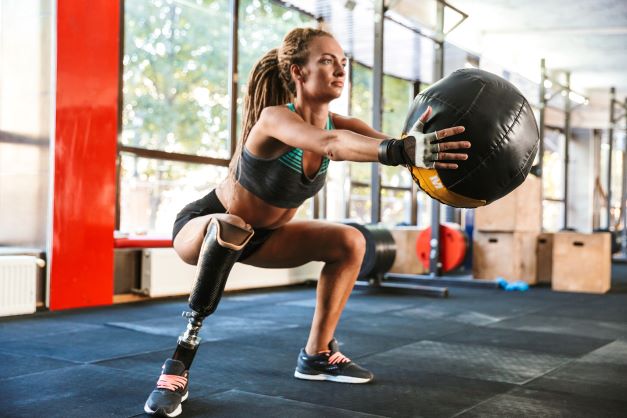Note that your final mark will not be saved in the system.
B2-B3 Different types of technology and their benefits and limitations GapFill
You must fill all the gaps before clicking ‘Check Answers!’

As sport has become more and more competitive over the years, technology has become more involved in sport to give performers that extra edge to push human performance towards its limits. In the health and fitness industry, many companies have also seen technology as an opportunity to target physical activity participants and increase participation rates in sport. Here we will explore some of the common types of technology that have been designed for use in sport and physical activity to improve performance and participant experience.
Clothing
One of the main aims of clothing technology is to produce lightweight garments that are breathable and are able to quickly wick sweat away from the skin into the atmosphere. This helps in - the maintenance of a safe body temperature that prevents overheating during activity.
Another key aim of clothing technology is for to minimise the impact of air resistance and drag slowing a performer down. This is important in timed events such as cycling, sprinting, running and swimming. It involves using elastic materials with smooth surface characteristics such as (more commonly known as Lycra), allowing the performer to cut through air more efficiently.
Footwear
Technology has sought to use certain materials and design features to get the biggest possible advantage out of footwear. For example, the latest running shoes are designed with a , which helps increase the energy return with each footfall. This acts as a sort of spring that helps rebound the performer and maintain their momentum when running.
Another aim of footwear is to increase grip with the playing surface. For example, studded boots for grass pitches and running spikes for rubber athletics tracks increase the grip with the surface, helping to improve and preventing the feet from slipping.
Footwear also features sport-specific designs suited to certain activities, such as materials in the design of walking boots to keep the feet dry, and a breathable upper part of running trainers to allow the circulation of air.
Sport-specific equipment
Items of sport-specific equipment such as road racing bikes, tennis racquets and golf drivers are used with composite materials such as graphite or . These materials are lighter and stronger than traditional materials like steel or aluminium, meaning a greater energy return and reduced vibration.
Protection and safety equipment
Technology has also made use of stronger, more lightweight materials to create protective equipment. For example, the shell of the modern cricket helmet is made from , which helps absorb the force of impact more and prevent less damage from occurring to the head. Bicycle helmets are made of similar materials and many now contain multidirectional impact protection system (MIPS) technology, which preliminary evidence suggests reduces the rotational force on the brain when falling off a bike and hitting the head. Road bike and racing helmets also have streamlined designs for improved aerodynamics for performance.
Assistive technology for people with disabilities
Technology has been applied to equipment that allows people with different types of disabilities to perform better and participate more easily:
- Use of strong materials like carbon fibre has helped in the design of prosthetic limbs that mimic the natural feel of missing limbs due to amputations. For example, running blades have been designed for leg amputees. These are curved and springy, allowing users to benefit from increased speed.
- The development of sound balls that are fitted with a bell or a device that emits loud electronic noises has allowed people who have to participate in sports such as tennis and football
- Sound systems known as hearing loops allow people with hearing difficulties to block out background noise and hear speech sounds with greater clarity in order to more easily participate and communicate with other players
Facilities
Sport and physical activity facilities have been designed using technology to replicate other environments, such as altitude chambers, dry ski slopes and indoor snow domes. Technology is also used for playing surfaces, such as synthetic grass pitches that can be used in case grass pitch surfaces become waterlogged or frozen, the advantage being that they can be participated on all year round, regardless of . Surfaces have also been designed to reduce the risk of injury, such as flooring in sports halls which provides an ideal amount of to allow a performer's foot to move slightly when planting on the surface (reducing the risk of ankle sprains), but also prevents the foot from sliding excessively (reducing the risk of slipping).
Officiating
Computer-assisted systems have been designed in many sports to give officials support in making decisions. This improves the fair outcomes in sport. Examples include:
- The assistant referee (VAR) in football
- The match official (TMO) in rugby
- Hawk-Eye in cricket and
- Photo finish in athletics sprint events